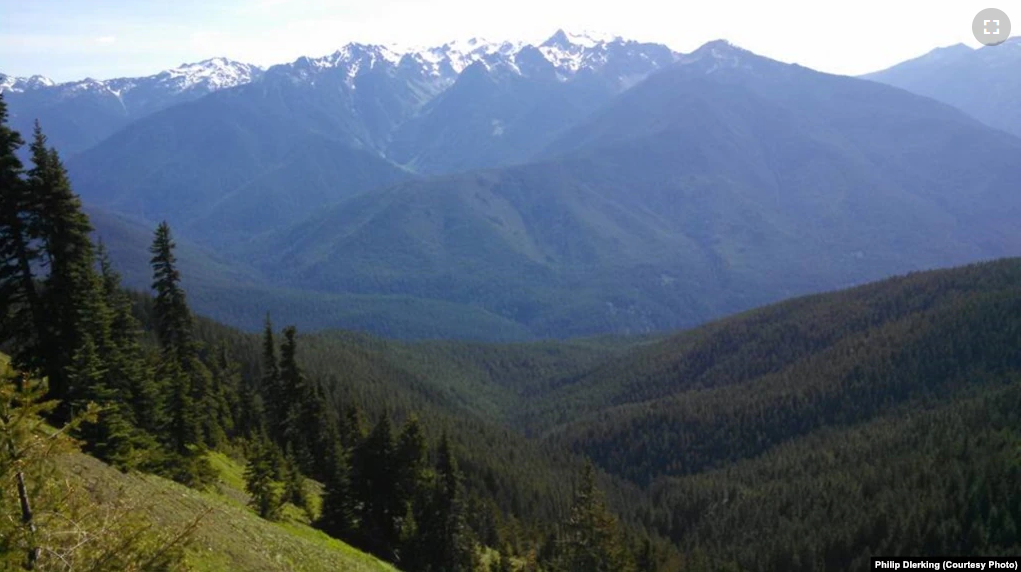This week in our national parks journey, we explore a vast area with mountains, beaches, forests, and glaciers. The area’s huge range in both rainfall and elevation make it one of the most diverse parks in America.
Welcome to Olympic National Park!
The park is located in the western state of Washington. It is on the Olympic Peninsula, in the northwest part of the state.
The park covers more than 400,000 hectares. It has several different ecosystems. Visitors will find temperate rainforests, glacier-covered mountains, and almost 120 kilometers of wild coastline.
History
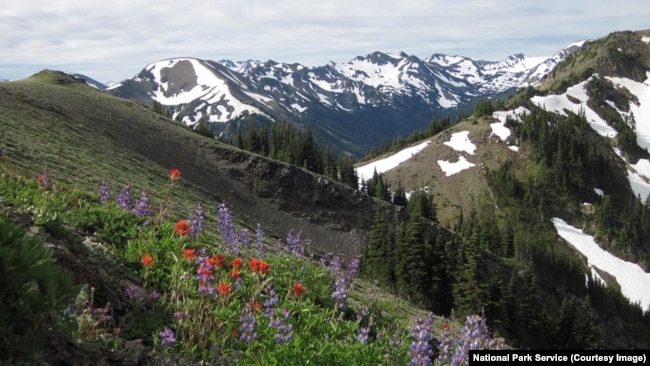
The Olympic Peninsula has seen travelers from many countries throughout history, including Mexico, Spain, France, Russia, and England. Many travelers from these countries arrived in the late 1700s. They were searching for the Northwest Passage. The sea route connects the northern Atlantic and Pacific Oceans by way of the Arctic Ocean.
These explorers all claimed to discover different parts of what is now Olympic National Park.
In 1792, English Captain George Vancouver explored the peninsula in great detail by boat. He named many of the natural features in the area.
Later, people began moving west across North America to search for gold. This era was known as the “Gold Rush.” Many people came to the western United States in search of gold.
At the time, the Olympic Peninsula was not very developed, and did not have roads. People had to travel by boat or horse to explore the peninsula.
Early settlers reached the Olympic peninsula in the mid-1800s. At first, people built homes on the coast. This area was easier to access, and had good land for farming.
Life on the Olympic Peninsula was difficult, however. People lived far from large cities and resources. They cut trees to build cabins. They also hunted and fished for food.
Later, people started making expeditions into the center of the peninsula. They explored its forests and mountains. These areas never became very populated, however.
To protect the nature of the area, President Grover Cleveland declared the Olympic Peninsula’s forests as the Olympic Forest Reserve in 1897. And in 1938, President Franklin Roosevelt signed the bill that established the Olympic National Park.
People
Eight Native American tribes are closely connected to the area.
One tribe, the Makah, has a long history of whaling. The U.S. bans whaling, but the Makah tribe is permitted to continue practicing this tradition in small amounts. American courts also gave Native American tribes the right to continue their traditional fishing practices in the area.
Protecting fish resources is important to the Native Americans living on the Olympic Peninsula. They work with the National Park Service to protect the area’s natural resources.
Places to go
Olympic National Park has meadows and lakes. It has glacier-fed rivers and mountain peaks that rise more than 2,300 meters. Each area of the park offers visitors something special.
Elwha Valley
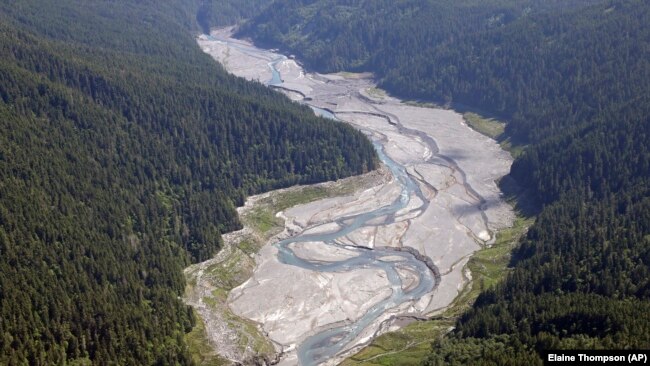
The Elwha Valley is in the central part of the park. It is the Olympic Peninsula’s largest watershed. A watershed is an area of land that separates waters that flow to different rivers or seas.
Long ago, the rivers in this area held the most salmon outside of Alaska. The area also was home to bears, eagles, cougars, and the Klallam Native Americans.
In the 1920s, a growing community of settlers built two hydroelectric dams to provide energy for the local economy. The dams created many problems for the river. They decreased the water in the rivers, which caused the fish population in the area to decrease. This affected the other animals that depended on fish for food.
The community later decided to fix these problems. In 1992, Congress passed the Elwha River Ecosystem and Fisheries Restoration Act. Both dams have been removed, and the National Park Service is using fish hatcheries to increase the salmon population.
Today, the Elwha River is the site of one of the largest ecosystem restoration projects in National Park Service history.
Hoh River Valley
The Hoh River is on the west side of the park. The river is formed from melted glacial ice on top of Mount Olympus. The river is 80 kilometers long. It empties into the Pacific Ocean.
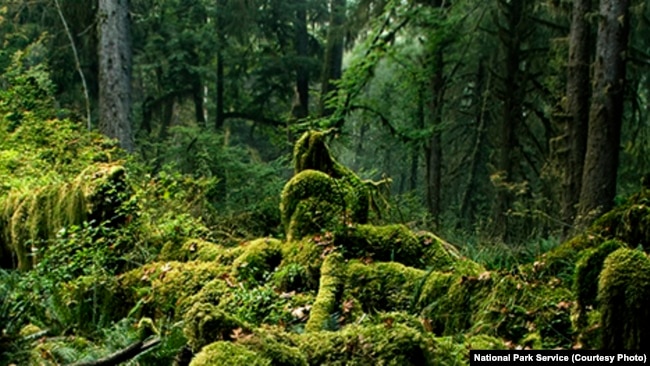
The area receives about 400 centimeters of rain each year. It is a temperate rainforest. Because of the amount of rain, many different types of plants grow in the Hoh rainforest, from mosses and ferns to huge Sitka spruce trees.
The Hoh River Valley is protected from any logging or development.
Hurricane Ridge
Hurricane Ridge is a mountain area in the northern part of the park. It is easy to enter, and provides incredible views of the Olympic Mountains.
The ridge has many hiking paths. In winter, people come here to ski. They also come here to take part in other fun winter activities, like sledding and snowboarding.
Hurricane Ridge usually has snow from December through the end of March. Visitors must be prepared for icy roads and severe weather.
The Coast
The westernmost part of the park is Pacific coastline. Olympic National Park has many breathtaking beaches.
Rialto Beach is known for its tall seastacks. These formations are tall towers of rock standing in the sea.
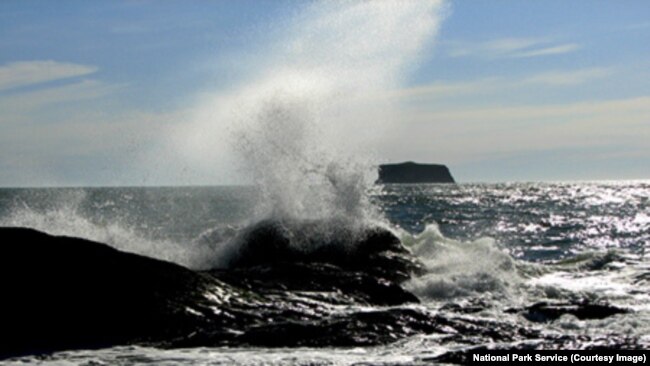
North of Rialto Beach is Hole-in-the-Wall. It is a natural arch that has been carved by the powerful sea.
Kalaloch Beach is known for its white sand. It also has three national wildlife refuges, which protect the area’s bird and fish species.
The coastline areas offer hiking and camping. They are some of the most popular places in the park.
A place for everyone
Olympic National Park offers difficult mountain hikes. It offers relaxing beaches, and exciting walks through lush rainforests.
There truly is something for everyone at Olympic National Park.
I’m Dorothy Gundy
And I’m Phil Dierking.
Phil Dierking wrote this report for Learning English, with materials from the National Park Service. Ashley Thompson was the editor.
Which part of Olympic National Park would you most want to visit? We want to hear from you. Write to us in the Comments Section or on WWW.VOA-STORY.COM
______________________________________________________________
Words in This Story
diverse – adj. made up of people or things that are different from each other.
expedition – n. a journey especially by a group of people for a specific purpose .
elevation – n. the height of a place.
glacier – n. a very large area of ice that moves slowly down a slope or valley or over a wide area of land.
hatchery – n. a place where people raise young chickens or fish from eggs
hydroelectric – adj. of or relating to the production of electricity by using machines that are powered by moving water.
interior – adj. located on the inside of something.
peninsula – n. a piece of land that is almost entirely surrounded by water and is attached to a larger land area.
populated – adj. to be a heavily populated.
seastacks – n. a column of rock standing in the sea.
thorough – adj. including every possible part or detail.
whaling – v. the job or business of hunting whales.
lush – adj. covered with healthy green plants
